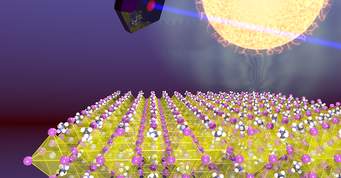That may sound like a silly question, but thin-film solar cells are pushing the boundaries of lightness and efficiency that will make them viable candidates for use on aircraft. Looking back at earlier achievements demonstrates the great things that can be done with limited resources. Eric Raymond, for instance, made a solar-powered flight across the United States in 1990 on amorphous solar cells that were only about two percent efficient. His Sunseeker Duo, which he flies around Italy and Switzerland with Irena, his wife and co-builder, has modern thin-film cells that are 23-percent efficient – a ten-fold gain. Before that, the earliest two solar-powered flights were charged by big, round solar cells, not terribly efficient and lacking full coverage of a wing because of the gaps between cells. Fred To in England and Larry Mauro in America did what they could with these disadvantages and managed successful, but short, flights after hours of charging small on-board batteries (also relatively inefficient). …
More Powerful, Longer Lasting Perovskites
Perovskites, calcium titanium oxide minerals composed of calcium titanate, with the chemical formula CaTiO, are found in relative abundance throughout the world and have characteristics that make them a plausible candidate for use in solar cells. Initially showing good efficiency at small scales, perovskite solar cells were potentially less expensive to produce than conventional silicon-based units, and could be more efficient, especially as single-layer silicon cells reach their theoretical limit of 30-percent efficiency. Perovskite cells could be configured to respond to different wavelengths of light, stacked on one another, and still be thinner than conventional solar cells. Part of the attraction of perovskites cells has been their rapid increase in efficiency, nearly equaling the best silicon cells in about six years, as opposed to the 35 years needed for silicon cells to increase from 16 percent efficiency to a little over 25. Some factors get in the way, one being that perovskites react badly with moisture. Thus, their life spans are much shorter than the more …
All-Electron Battery – Stanford Strikes Again
With recent news of a solid-state battery coming for the labs of Yi Cui, a second solid-state solution seems to follow from another Stanford Laboratory. The All-Electron Battery, funded at least partly by an ARPA-E grant that underwrote the program from 2010 to 2012, has fostered a startup, QuantumScape. Starting from the stated need for a battery “with twice the energy storage of today’s state-of-the-art Li-Ion battery at 30% of the cost,” ARPA-E worked with the premise that Stanford was “developing an all-electron battery that would create a completely new class of energy storage devices for EVs. Stanford’s all-electron battery stores energy by moving electrons rather than ions. Electrons are lighter and faster than the ion charge carriers in conventional Li-Ion batteries. Stanford’s all-electron battery also uses an advanced structural design that separates critical battery functions, which increases both the life of the battery and the amount of energy it can store. The battery could be charged 1000s of times …
Direct Conversion of Sunlight to Hydrogen – Cheaply
We’ve witnessed several attempts to produce an “artificial leaf,” a device emulating the photosynthesis of plants, but providing hydrogen and oxygen that could power fuel cells in electric vehicles instead of plant sugars to make trees and flowers grow. One of the biggest problems so far has been the rare and costly materials necessary to generate hydrogen. Ècole Polytechnique Fédéral de Lausanne (EPFL) scientists have come up with a low-cost alternative, using abundant materials called perovskites and budget electrodes to produce hydrogen from water with a 12.3 percent conversion efficiency – a record for fairly common materials. Perovskites are a calcium titanium oxide mineral that come in a variety of colors and can be bog-common or extremely rare, approaching rare earth mineral status. The CaTiO3 used by Michael Grätzel is of the common variety, but that doesn’t seem to detract from its performance as a hydrogen-production agent. That, and the inexpensive materials used in the device’s electrodes cause Jingshan Luo, a post-graduate …

